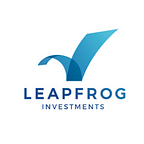Don’t follow the money. Follow the people
Where will the most significant businesses of the next decade be found? It’s the riddle that investors the world over are continually trying to solve. For many, the answer is to follow the money, hence the frequent focus on the capital-soaked US and European markets.
But there is another approach, and that is to follow the consumer. If capital today flows towards pre-eminent business opportunities, it is the social mobility of people that marks tomorrow’s golden ticket.
Nowhere is that mobility more apparent than in the emerging markets of Africa, South and Southeast Asia, where two billion people earning between $2 and $10 a day are currently rising out of poverty. These emerging consumers, the bulwark of a new global middle class, represent the economic powerhouse of the future. They will govern an estimated $15 trillion of consumption by 2020. And the businesses to watch will be those that shape themselves around this unique and unprecedented market opportunity.
Take Nigeria, the most populous country in Africa, where the vast majority of the 175 million population live on less than $10 a day. Until relatively recently, there has been no business model that could provide essential services — from financial to health and education — to people in this low-income bracket at the scale required.
Technology, and particularly the rise of mobile, has changed that, and today mobile money services are pervasive across Africa. Even compared to ten years ago, the ability to reach people and provide affordable services such as fund transfers, airtime top-up, bill payment and remittances has been transformed. According to McKinsey, 28 percent of Nigeria’s population now own a smartphone, a share that rises to 39 percent among 18–34 year-olds.
With that rapid adoption of smartphone ownership comes the opportunity to provide financial services to previously unbanked and underbanked populations. Mobile money platforms are proving to be a distribution platform for services previously beyond the reach of most consumers in emerging markets. Take insurance, a vital safety net for people who often live just one health or harvest event away from complete poverty. A company like mobile insurer BIMA (disclosure: LeapFrog is an investor) has, in only five years built a customer base of over 20 million mobile network subscribers in 15 countries across Africa, Asia, Latin America and the Caribbean. Three quarters are buying insurance for the first time. In Ghana and Bangladesh, BIMA has single-handedly doubled per capita insurance penetration.
When you combine the untapped nature of these markets with the scalability of mobile models, the potential becomes vast. Take just one sub-segment of the same market: life insurance. In Nigeria, total life insurance gross written premium represents just 0.08 percent of GDP according to Swiss Re (compared to 9 percent in the UK). Local life insurers are underdeveloped, compared with much smaller African markets like Ghana or Kenya. Innovation is scarce partly due to a shortage of key technical human resource. At latest count, Nigeria boasts a total of seven actuaries. Yet, according to EY, insurance is expected to grow 10 percent per annum. Direct-to-consumer mobile distribution will be a catalyst for this growth.
Insurance is just one example. The same principle can and does apply in industries from health to housing, energy to education, and across the financial services spectrum. We are seeing a new generation of companies building business models around the unmet demand of emerging consumers. These companies have recognised the opportunity both to profit from servicing a rapidly-growing market, and at the same time transform the lives of millions of people with essential services.
For decades, the prevailing global attitude towards low-income people in emerging markets has been that they can only be helped through grants and charity. Yet the scale of the demand is such that the reach of philanthropy can never be sufficient; and philanthropy is not a sustainable business model. Only businesses that build sustainable commercial models can hope to meet the skyrocketing demand for services in emerging markets.
That is an opportunity already creating business models which investors can back. Impact investment, an asset class with its roots in delivering social benefit for a concessional return, is pivoting towards an appreciation that the greatest impact is delivered by companies that produce superior financial returns, thanks to products and services that transform the lives of millions of emerging consumers. They do good and do well, transforming lives and maximising profits.
The idea of the mega-growth company has become something of an obsession amongst global investors. Yet those with eyes only for Silicon Valley and the likes of Uber risk missing the biggest opportunity of all: companies that are building industries almost from scratch, in markets where significant unmet demand is well beyond the reach of traditional supply. Investors looking for the future of growth need to recalibrate their sights to follow the emerging consumer. They are the true compass points for a new world of business.
By Karima Ola
Karima is Partner at LeapFrog Investments and is widely known for her work shaping the African investment landscape. Previously, she was CIO of ADC African Development Corporation, where she led the company’s entry into Nigeria. Karima was recently named one of “Africa’s women to watch” by Bloomberg.
Access this piece from African Business Review here and explore LeapFrog here
